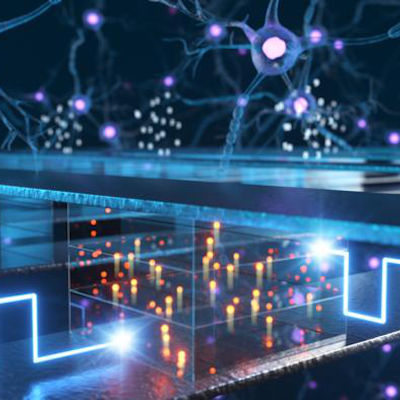New material could boost data storage
Apr. 29, 2025.
2 mins. read.
2 Interactions
A layered material transforms under pressure, offering energy-efficient, fast data storage for future computers.
A soft, layered material changes dramatically when squeezed. This could help computers store data faster while using less energy. Researchers at Washington State University and the University of North Carolina at Charlotte studied a material called β-ZnTe(en)₀.₅. It combines zinc telluride, a hard substance, with ethylenediamine, an organic molecule. The material looks like stacked layers, similar to a sandwich with hard and soft parts. When pressed, the soft layers shrink more than the hard ones.
The researchers used a diamond anvil cell, a tool that applies strong pressure. They also used a new X-ray diffraction system, a machine that shows tiny structural changes. This system let them study the material on campus. Normally, such experiments need large facilities far away. The material changed its structure twice at low pressures. A phase transition, where atoms rearrange, caused these changes. The material shrank by up to 8%, becoming denser.
Phase transitions for memory
These structural shifts could support phase change memory, a fast, long-lasting data storage method. Unlike current computer memory, it doesn’t need constant power. The material’s different forms have unique electrical and light properties. Scientists believe these forms could store digital data. The material transformed at much lower pressures than pure zinc telluride, making it special. It also behaves differently depending on the squeezing direction, offering more ways to tune it.
The material might also waveform in photonics, where light carries information. Its ultraviolet glow could shift with its phase, aiding fiber optics or optical computing. Researchers tested the material with pressures of 2.1 and 3.3 gigapascals. The changes were significant, unlike most materials needing higher pressure. This discovery is a step toward using the material commercially.
This study uncovers new possibilities for data storage and light-based technology. The researchers now plan to test how temperature affects the material. They also want to study combined heat and pressure effects. These tests will reveal more about the material’s potential.
The researchers have described the methods and results of this study in a paper published in AIP Advances.
Let us know your thoughts! Sign up for a Mindplex account now, join our Telegram, or follow us on Twitter.


.png)

.png)


.png)





0 Comments
0 thoughts on “New material could boost data storage”